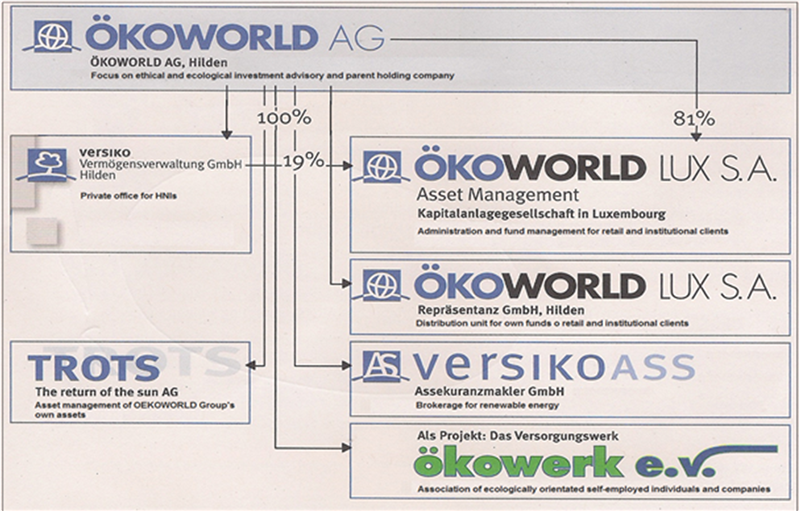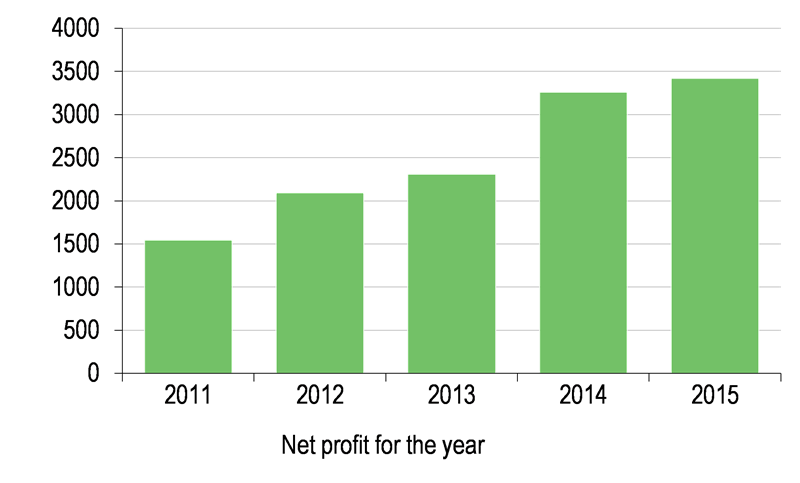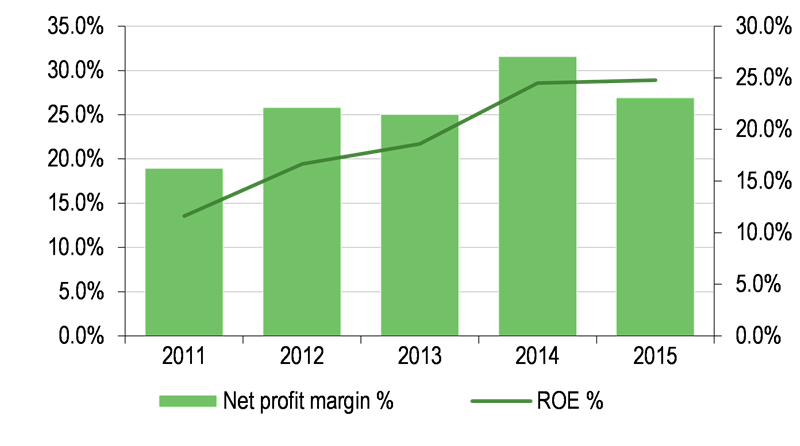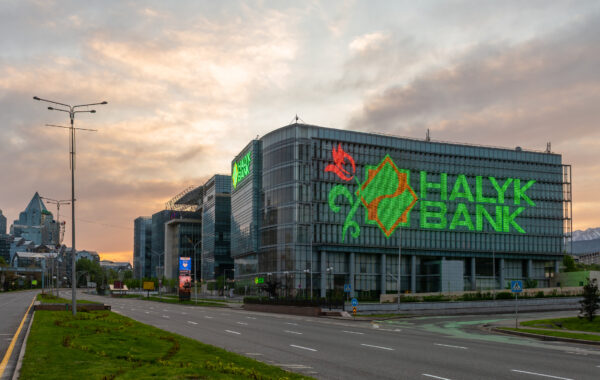Company description: Pioneering SRI
Modern socially responsible investment (SRI) has its roots in the 1960s, when many political and social issues emerged after WW2. A rising number of investors realised that investments have impacts on both the fabric and consciousness of society. Investment capital can finance either socially desirable or socially destructive businesses. The trend gathered pace in the 1980s with events such as the Bhopal, Chernobyl and Exxon Valdez incidents. A sustainable and responsible approach to investing includes both quantitative and qualitative analysis. All investors look for profit potential, but responsible investors also integrate an evaluation of environment, social and governance (ESG) factors.
In the US, the “U.S. Sustainable, Responsible, and Impact Investing Trends” report screens the SRI market from the perspective of the investor. In the 17 years from the first Trends Report in 1995 and the most recent report in 2014, responsibly managed asset pools have grown from $639bn to over $6.57trn, an increase of 929% and a compound annual growth rate of 13.1%. SRI has become a major investment scheme (source: www.sriconference.com).
In 2006, the UN defined six major principles in its Principles for Responsible Investment (PRI) initiative; see: www.unpri.org/about/the-six-principles.
Exhibit 1: Organisation of the ÖKOWORLD group of companies
|

|
Source: ÖKOWORLD Newsletter 3/2016, page 12; Edison Investment Research adjustments
|
ÖWAG is a pioneer in bringing ethical and ecological financial solutions to the German market. It formed its principles early in the 1970s, refined them in the 1990s and has employed them since then. The company combines these ethical principles with the pursuit of sustainable returns. Over the years, the company has achieved a track record in operating successfully in the SRI market environment, both as fund manager and financial advisor.
ÖKOWORLD (ÖWAG) is the listed parent company of the ÖKOWORLD group of companies. On 20 December 2013 ÖWAG was born out of versiko, which the current CEO Alfred Platow and Klaus Odenthal founded in 1975. The name change reflected the growth of the Luxembourg-based fund subsidiary ÖKOWORLD Lux and the associated brand. The original insurance broker versiko offered a wide range of products, including pension schemes to sustainable companies. These schemes were offered through ökowerk e.V. ÖKOWORLD Lux SA was launched to provide the investment products for ökowerk and other clients.
Currently, in addition to the fund management and related activities, ÖWAG owns an insurance brokerage business – focused purely on pension schemes – and an asset advisory service for high net worth individuals (HNWIs), who have a strong SRI orientation. This business is executed by ÖWAG’s 100% holding in versiko ASS.
The parent company owns directly or indirectly 100% of each of its operating subsidiaries. ÖKOWORLD, the listed unit, additionally provides advisory services to its subsidiaries. ÖWAG’s shares have been listed on the SCALE segment as of March 2017. Given the size of the company, consolidated IFRS (or German GAAP) accounts are not required. For that reason, ÖWAG reports the results of the single listed parent/holding company. Hence, all income streams are the fees received by ÖWAG after costs incurred by the subsidiaries. Given the underlying growth of its core business streams, it is likely that ÖWAG will shift focus and start reporting fully consolidated accounts in due course.
The focus today is clearly on SRI driven fund management, executed by ÖKOWORLD Lux SA. Since 1996, it has launched six funds, which mostly cover global equity and are actively managed through a special stock-picking approach (see details further down).
SRI definitions are manifold in the financial industry, partly based on the UN PRI initiative. ÖWAG started early in defining its own principles. These are used across the firm, mainly as approval and rejection principles in the fund management arm. The stability of the SRI definitions helps the research team and the investment committee to implement them across the fund family, with success: over the years, the group’s AUM has increased steadily, providing a steady growth for fee income. ÖWAG provides its research exclusively for its own fund management group.
Exhibit 2: ÖWAG’s ÖKOWORLD Lux SA funds
ÖKOWORLD funds AUM, €m |
2013 |
2014 |
2015 |
2014 % change |
2015 % change |
ÖKOWORLD ÖKOVISION Classic |
390.3 |
427.5 |
513 |
9.5% |
20.0% |
ÖKOWORLD ÖKOVISION Garant 20 |
20.5 |
15.3 |
16.3 |
-25.4% |
6.5% |
ÖKOWORLD Klima |
13.9 |
15.7 |
17.9 |
12.9% |
14.0% |
ÖKOWORLD Water for Life |
11.3 |
13.4 |
15.3 |
18.6% |
14.2% |
ÖKOWORLD Growing Markets 2.0 |
18.3 |
42.4 |
65.8 |
131.7% |
55.2% |
ÖKOWORLD ÖWAGtrust |
13.1 |
23 |
26.6 |
75.6% |
15.7% |
Total €m |
467.4 |
537.3 |
654.9 |
15.0% |
21.9% |
|
|
|
|
|
|
ÖKOWORLD funds units |
2013 |
2014 |
2015 |
2014 % change |
2015 % change |
ÖKOWORLD ÖKOVISION Classic |
3516 |
3607 |
3698 |
2.6% |
2.5% |
ÖKOWORLD ÖKOVISION Garant 20 |
191 |
137 |
146 |
-28.3% |
6.6% |
ÖWAGworl Klima |
341 |
341 |
343 |
0.0% |
0.6% |
ÖKOWORLD Water for Life |
91 |
97 |
103 |
6.6% |
6.2% |
ÖKOWORLD Growing Markets 2.0 |
167 |
321 |
464 |
92.2% |
44.5% |
ÖKOWORLD ÖWAGtrust |
117 |
193 |
215 |
65.0% |
11.4% |
Total units |
4423 |
4696 |
4969 |
6.2% |
5.8% |
Source: ÖKOWORLD ÖKOVISION annual fund brochure 2016
Comparing the growth in units in 2014 and 2015 with the growth in AUM indicates that ÖWAG’s increase in AUM was mainly a function of strong performance, in particular with the Classic and the Klima fund. A strong increase in net funds and performance was recorded for Growing Markets 2.0 and the multi asset ÖKOtrust Fund. All activities related to distribution are centralised in Hilden, the site of the parent company. Its products and services therefore are best described as ‘ambassadors of humanity’. As a parent/holding company, ÖWAG’s business model is based on fees, which are received as compensation for services to its subsidiaries.
Revenues by segment/division
Exhibit 3: ÖWAG revenues by segment 2015
|
Exhibit 4: Fund investors by region 2016
|

|

|
|
|
|
Exhibit 3: ÖWAG revenues by segment 2015
|

|
|
|
Exhibit 4: Fund investors by region 2016
|

|
|
|
Insurance brokerage (11% of 2015 revenues): Insurance brokerage is the historic business core of ÖWAG. The current range has an exclusive focus on pension schemes. This said, the income generation is mainly based on retention fees, a result of previous broader activities. As these contracts are based on long-term, annual contributions, ÖWAG should see a generally increasing income stream reflecting wage inflation. In 2016 management said that business increased by 20%, mainly in Q416, due to the new focus on individual and corporate pension schemes. This implies a new level of revenues around €1.6m as the basis for the following years.
Investment brokerage (1% of 2015 revenue): Investment brokerage is also part of the historic business core; here, ÖWAG sold third-party investment products to its clients. This business remains stable, as clients tend to continue investing with ÖWAG over a long period of time. The fees received by ÖWAG are essentially the retention fees of the investment brokerage and are therefore expected to grow steadily.
Performance fee (29% of 2015 revenue): The key earnings driver has been the performance fee: here, the company specific ‘one & only’ research approach, focusing on long-term, sustainable returns, resulted in a 65% increase in performance fees to €3.4m in 2015. Given the strong performance record, it is hoped that these fees will continue to grow. ÖWAG receives 45% of the performance fee, as the rest is kept within the fund management unit to cover its costs.
The performance fees are based on the quarterly high-water mark performance of the funds at the end of each quarter. The fee is based on absolute performance, given the structure and outline of the funds (see below). Fund management receives 10% of each increase in performance at the quarter end, assuming a positive performance against the previous high-water mark is achieved.
In 2016, ÖWAG received performance fee income on the total performance of the fund. However, against major indices, ÖWAG’s ÖKOWORLD Classic underperformed against key global indices.
Structuring and conception fee (47% of 2015 revenue): The largest income source is the segment ‘structuring & conception’; this segment is reasonably stable and accounted for annual revenue of €4.8-5.5m over the past five years. This represented 77% of revenues in 2012, compared to just under 50% in 2015.
Structuring fees are essentially basic retention fees, linked to the AUM of the fund management subsidiary. They are paid out on the base of the invested capital. ÖWAG’s fee structure is twofold:
■
A 5% upfront fee is paid by investors to ÖKOWORLD Lux (mainly paid to distributors). ÖWAG retains those fees, which are generated by its own salesforce. This, however, is minimal for the time being, as ÖWAG focuses on third-party distribution.
■
A 1.76% annual management fee, earned by ÖKOWORLD Lux SA, of which ÖWAG receives 45% with the balance being used to pay for the costs of the fund management in Luxembourg.
As ÖWAG mainly distributes through third parties, 80% of these received fees (ie the 45%) are paid out in form of retention fees to these distributors representing just 36% of total retention fees earned by the fund management unit. In ÖWAG’s accounts, these payments to the distributors are shown as ‘material expenses’. The remainder is kept by ÖWAG.
Performance and management fees are based on the funds’ performance and retention of AUM. Here, ÖWAG’s main task is to market the success and the special SRI approach of the funds to retail distribution networks and institutions. More than 55,000 retail clients have been attracted through distribution platforms, namely:
■
five German insurance companies, who sell fund-related third-party life insurance policies;
■
120 co-operative banks in Germany; and
■
local savings and loans banks.
Over the years, ÖWAG has developed an online approach with the help of ING DIBA (approximately €50m AUM) and Comdirect (approximately €40m AUM). The online channel is anticipated to boost fresh funds in the next years. The vast majority of AUM is held by retail clients, mainly (75%) in Germany. Of these, a focus is on doctors and medical service professionals, ie higher and stable income individuals. As they are not financially savvy, the distribution relies on the advisors’ ability to explain the ÖWAG funds and the desire of the clients to seek such SRI investments. ÖWAG’s funds are also held by institutions. These are mainly insurance companies, which distribute the funds. The company is not aware of any institution holding a significant amount, ie >€3m, in its shares.


















